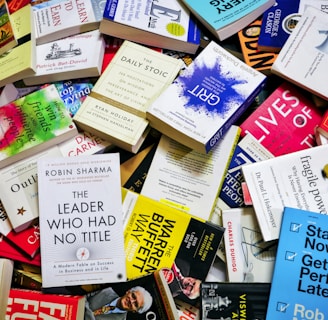Sapiens, Revisited: Grand Sweep, Big Claims, Useful Friction
Humans dominate by inventing and coordinating around shared fictions (gods, money, nations), which enable large-scale cooperation—and large-scale damage. Verdict: Read for the lens and language; skip if you need granular citations and settled consensus.
BOOKS
10/6/20255 min read


The Big Idea
Sapiens argues that Homo sapiens won the evolutionary lottery not by strength but by story—our capacity to believe in collective fictions that scale trust beyond kin. Harari strings human history into three revolutions: Cognitive (language, myth), Agricultural (surplus, hierarchy), and Scientific (knowledge, capitalism, acceleration). These revolutions increased coordination and power while often eroding individual welfare or ecological stability. The book doesn’t solve contested historical debates; it offers a sharp, memorable frame for thinking about power, progress, and meaning.
What’s New Here (and Why It Matters)
This is not a trove of new data. It’s an integrator: anthropology, history, economics, psychology—compressed into plain language and sticky terms (imagined order, luxury trap, intersubjective reality, Homo economicus as religion). The novelty is scope with clarity. You learn a vocabulary to interrogate institutions: money as fiction backed by trust; empires and corporations as legal stories with real teeth. Comparators were not provided, so I won’t force them; Not provided.
Core Arguments / Plot Architecture (spoiler-safe)
Part I — Cognitive Revolution: Sapiens outcompete other hominins via flexible language and shared myths; tribes scale to nations and faiths.
Part II — Agricultural Revolution: Farming creates surplus, property, bureaucracy—and the luxury trap: more stuff, less freedom; population wins, individuals maybe not.
Part III — Unification of Humankind: Money, empires, and universal religions stitch strangers into vast systems.
Part IV — Scientific Revolution: Knowledge pursuit pairs with capitalism; markets + research drive compounding change, for better and worse.
Evidence style: Big-picture synthesis, case sketches, thought experiments; light on footnotes and methodological spadework.
Deep Dive
Frameworks & Models (how to use them)
Imagined Orders:
Use: For any institution, write: Story → Sanctions → Scale. What narrative legitimizes it (mission, law, ideology)? What enforces it (police, courts, social shame, software rules)? How big can it scale before trust breaks?
The Luxury Trap:
Use: Before adding a feature/process/purchase, ask: does this bind future time/attention? If yes, require a compounding return (learning, distribution, cash flow) or skip.
Intersubjective Reality:
Use: Map what’s physical (land), subjective (taste), and intersubjective (money, brands). Optimize influence where belief creates value, not where physics blocks you.
Evolutionary Upgrades vs. Mismatch:
Use: When a behavior feels “natural,” check context: was it adaptive for bands of 150? If yes, design guardrails for modern scale (feeds, markets, megacities).
Progress Accounting (Two Selves):
Use: Evaluate changes along three ledgers: power (can do), welfare (live well), ethics (should do). Avoid cheering power gains that tax welfare or ethics.
Evidence Check
Strong: The coordination-through-fictions thesis is widely resonant and explanatory across money, law, religion, and corporations. The triad of revolutions is a clear teaching scaffold.
Weak / debated: The “agriculture = history’s biggest fraud” stance is provocative and partially speculative; happiness claims are asserted more than measured. Some simplifications (e.g., linear paths from myth to empire) flatten messy, region-specific histories. Specialists have challenged multiple anecdotes and generalizations. Treat this as interpretive narrative, not settled historiography.
Assumptions Under the Hood
Human social reality is story-first, not primarily material or technological (a contestable weighting).
Large-scale institutions are legible through a single lens (fictions), rather than multiple incommensurate lenses (ecology, class, geography).
Progress can be tallied net across eras—an assumption many historians resist.
Practical Takeaways
Design with narrative openly: If you run a team or product, write the core imagined order (the promise and constraints). Make it explicit; align incentives and enforcement to it.
Run luxury-trap checks: New tools, features, or habits must beat a maintenance hurdle rate. If upkeep > value compounding, decline—even if it feels prestigious.
Map the enforcement layer: Good stories without teeth fail. Specify who/what enforces rules (legal terms, moderation policies, transaction limits) and how violations are handled.
Separate power from welfare: When choosing careers, policies, or tech, score power (scale) vs welfare (human experience). Aim for moves that lift both, or justify the trade.
Use intersubjective leverage: Influence beliefs to create value ethically—transparent pricing, reputation systems, community norms—rather than brute-force compliance.
Expect second-order effects: For any intervention, list winners, losers, spillovers. Stories spread; unintended consequences often ride them.
Micro-Playbook (print this)
Name your org’s myth in one sentence.
List its sanctions (what actually enforces it).
Identify one luxury trap to cut this month.
For the next decision, fill the power/welfare/ethics ledger.
Write one intersubjective lever you can pull (policy, default, narrative).
Contrarian Note
Harari foregrounds narrative as the prime driver. Useful—but material constraints (geography, pathogens, energy, logistics) often dictate the story’s range. You don’t myth your way around calories or coal. Over-indexing on fictions can tempt leaders to think messaging fixes everything. It doesn’t. Pair story with infrastructure or expect reality to veto.
Blind Spots & Risks
Oversimplification: A world-spanning story invites shortcuts; nuance and minority experiences compress under tidy arcs.
Evidence thinness: The book’s confidence can mask shaky or contested findings; check specialized texts before citing specifics.
Anthropocentric ledger: Animal suffering and ecological collapse show up, but briefly; the accounting can feel human-first until late.
Teleology creep: “Unification” can read like inevitability; alternative histories get limited oxygen.
Who Should Read This (and Who Shouldn’t)
Read if:
You want a big-frame primer on why institutions feel real yet rest on belief.
You build products, policies, or communities and need narrative literacy.
You enjoy provocative syntheses and can handle caveats.
Skip if:
You need scholarly sourcing, narrow claims, and cautious hedging.
You’re after regional depth (e.g., a specific empire or period).
Sweeping generalizations drive you up the wall.
How to Read It
Pacing: A chapter or two per day; pause to translate terms into your world.
Skim vs. slow down: Skim colorful anecdotes; slow down on the revolutions, money/religion/capitalism chapters, and the happiness/ethics ledger.
Format: Print or ebook for margin notes; audio is fine but you’ll want to revisit key sections.
Pairing: After reading, sample a specialist counterpoint on any chapter you plan to reference professionally.
Scorecard (1–10)
Originality: 8 — Familiar parts, unusually clear synthesis and vocabulary.
Rigor / Craft: 6 — Persuasive narrative; light apparatus; some contested moves.
Clarity: 9 — Concepts stick; terms travel well.
Usefulness: 8 — High for framing institutions and second-order effects.
Re-read Value: 8 — Worth revisiting when your world-building (or myth-busting) job changes.
If You Liked This, Try…
Guns, Germs, and Steel (Jared Diamond): Material constraints—geography and germs—as drivers; a counterweight to pure narrative.
The WEIRDest People in the World (Joseph Henrich): How institutions and psychology co-evolve; denser but rewarding.
The Dawn of Everything (Graeber & Wengrow): Challenges inevitability stories; more anarchic, more debate.
The Better Angels of Our Nature (Steven Pinker): Long-run violence decline thesis; data-forward, contentious, useful.
What We Owe the Future (William MacAskill): Moral accounting at civilization scale; future-focused ledger.
FAQ
Is it accurate?
Parts are well-supported; others are debated. Treat it as agenda-setting synthesis, not the last word.
Is it political?
It’s civilization-scale and inevitably touches politics, religion, and capitalism. The tone is analytic, sometimes provocative.
Will it help at work?
Yes—if you translate “imagined orders” into brand, policy, and incentive design. It’s a thinking tool, not a management manual.
Do I need background in history?
No. It’s written for non-specialists, though you’ll benefit from following up with domain texts on sections you care about.
Which edition should I buy?
Not provided.
Final Verdict
Sapiens is a powerful lens, not a lab report. If you can tolerate broad strokes and use the concepts as thinking tools, it pays off—especially for anyone building or reforming institutions. If you need footnotes that fight back and claims that survive trench warfare with specialists, borrow it and read counterpoints. Either way, the takeaway sticks: stories run our systems; design them carefully—or they’ll design you.




